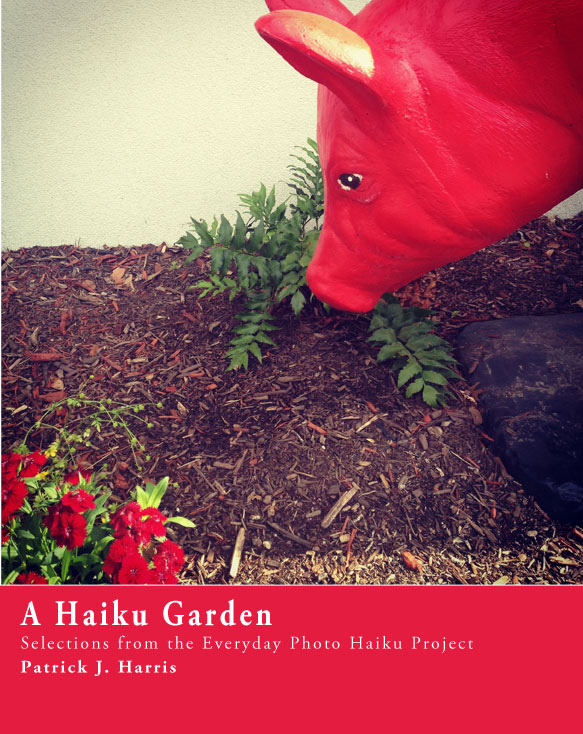
Category: Art
Fine art, painting, photography, mixed media, sculpture
-
Five Card Nancy
From Scott McCloud, Five Card Nancy consist of thinking five random panels from the Nancy comic strip and making a three panel comic. It’s like Cards Against Humanity, but more surreal.
-
The Legacy of Hokusai’s Great Wave
The Legacy of Hokusai’s Great Wave
Of course, the Great Wave was made to be reproduced. It has never had a definitive form. Hokusai’s original brush drawing would have been destroyed when the printers cut the woodblocks in 1831, and though no one knows exactly how many impressions from the original blocks still exist, it’s thought to be about 100. No two prints could ever have been the same. Variation was built into its creation – yet somehow, despite or perhaps because of all the variations, the design itself retains, whatever its context, a sort of universal meaningfulness.
-
XOXO 2024 Festival
XOXO Festival is a one of a kind art, media, and technology conference in Portland. Its speakers are well known in various online and offline circles, and the talks inspire a liveliness and curiosity.
One talk, by Cabel Sasser, from the 2024 XOXO iteration tells about a painting in a McDonalds that leads to a discovery of a prolific, unknown talent.
-
A Haiku Garden – Published!
A Haiku Garden: Selections from the Everyday Photo Haiku Project is published on Amazon!
I created the book, which contains 104 of the most interesting photo haiku from the project. All photos and haiku done on an iPhone (4s then 6).
-
And the arts bring life to your city
“Creative centers provide the integrated ecosystem or habitat where all forms of creativity–artistic and cultural, technological and economic–can take root and flourish.” Richard Florida, The Rise of the Creative Class Revisited.
Approximately $300,000 will be cut from the Public Arts budget in Fort Worth, a 25% reduction from 2012. That 25% reduction will multiply into other areas of the Fort Worth economy as the people who will receive those cuts create tremendous value for the city–value the city will lose.
The arts are a tricky thing to value. Painting, photographing, performing, pirouetting, playing with ideas that reflect a culture, mean different things to different people. Through asking a lot of questions and doing math, we can get get a sense of their nominal value. The Arts Council of Fort Worth commissioned a study regarding the impact of the arts to Tarrant County. $200 million dollars coalesce, swirl and reverberate through the economy across industry expenditures, income, taxes and money spent on events.
To echo the point of how amazing that is, consider that Fort Worth contributes $.94 per capita towards the arts. Our Dallas neighbors to the near east–$3.10. Our El Paso (EL PASO!) friends to the far west–$1.95. Per capita measurements are how we make cities equal. And for a city that prides itself in Cowboys and Culture, the per capita measurement of arts investments ought to be an embarrassing shred in the in the back of our jeans.
The study also touched on those that put their painters’ jeans on. 3,000 jobs thread in multiple directions due to the arts. Those are people. Creative people. Creative people who know people. Creative people who attract people who know people who know people.
There’s the rub. There’s the collective tumbleweed blowing through our prarie. There’s the boot in our cowboy rear end.
The arts attract creative people, to create things or events. They bring skills that we can’t send to India or China, and instead apply them to our community. When creative people combine and share ideas, innovation happens. Also, they spend money, they attract night life, they attract more culture and value.
A prime example is the Magnolia corridor. A mix of bars, restaurants, shops, galleries and housing that feels uniquely creative. Property values between 2004 and 2011 increased 137%. Some would say that a vegan restaurant kicked it all off. A vegan restaurant in a steak town attracted so much more.
Much more, innovation, like fortune, favors the bold, the prepared and those who nurture it.
Fort Worth has a choice, one that isn’t zero sum–public policy is rarely zero sum–but one that is nuanced. The city manager stated in the proposed 2013 budget that this budget is a maintenance budget. Yet, they city wishes to grow revenues and increase economic development.
Taking money away in the short term will cause longer term impacts for numerous organizations, and consequently, the city.
If Fort Worth nurtures its arts and creative citizens, makes the policy choice of supporting the arts, it will bring in much more than it invests.
I grew up in surburban Houston, a place without zoning and seemingly any forthought to growth and development. A trip to the museums encompassed a day trip downtown. Nightlife was the movie theater. Street festivals were neighborhood affairs of a lone street with a couple of pies and a few coolers of cold drinks.
In staying here after TCU, I live in a city that astutely manages its land for development. I have five world class museums within a half mile of each other and can visit them all before lunch. Rooftops, live bands, speak easy cocktails and amazing food are a ticket to any night of the week. Street festivals in this city bring in those across state lines.
All of this is possible because we have creative people within City Hall who beleive in what our tax dollars do. These creative people live here for some reason or another. And maybe they stayed because they liked it here. Because it’s a city that supports the arts and creativity. Cowboys that rustle the resources to a diverse Culture that is Fort Worth.
-
Book review: The Passionate Photographer by Steve Simon
Steve Simon’s book, [amazon_link id=”0321719891″ target=”_blank” ]The Passionate Photographer[/amazon_link], covers photography as more than a hobby. Â Broken into 10 chapters, he goes from identifying one’s desire to take photographs to using that desire to share a vision. In between, basic technical issues are discussed related to gear, f-stops, shutter speed and ISO as well as elementary composition techniques.
Throughout, he intersperses stories and quotes from other photographers, both historical and contemporary. While some photo books only use the authors images, Simon uses others’ images to illustrate points. Each chapter has an assignment for the reader to attempt and how to assess their ability. Â Also, Simon uses personal stories to cap each chapter in a “lesson learned”.
For beginners, Chapter 2, about practice and persistence, and Chapter 3, about ways to keep seeing the world anew will offer the best value. Chapter 6, about how to see light, really shows how to “see” an image–light and contrast creating interesting shapes and forms that are engaging and pleasing to the eye. Chapter 9, details how to go about creating a photo project and executing it, may help all those with ideas of “this would be a cool thing to do…”
[amazon_link id=”0321719891″ target=”_blank” ]The Passionate Photographer[/amazon_link]Â is a well sourced and well written book. Â Colorful, practical and engaging.
-
Review: Old Masters and Young Geniuses by David W. Galenson
What happens when an economist becomes an art critic? That’s the premise David Galenson writes in [amazon_link id=”0691133808″ target=”_blank” container=”” container_class=”” ]Old Masters and Young Geniuses[/amazon_link] with as he examines numerous artists, primarily from mid 1800s impressionists through mid 1900s modernists. The thesis is that two life cycles of an artist: old masters and young geniuses. Old masters are those that reached their peak later in life, and Galenson believes, due largely to a life of artistic experimentation. Â Young geniuses succeed due to conceptual innovation, simplifying previous complexities. Â His two metrics to quantify and distinguish artists into either category are the price of an artist’s work from a certain point in their career, or the number of prints, or citations, of their work from a time in their life.
Galenson also applies his framework for analysis to the Renaissance painters of Michelangelo and Carravagio, 19th century and early 20th century American writers, directors, poets and sculptors. (Photographers are noticeably absent.) The book is dry and reads like a mixture of art criticism and art history. Â The depth of research provides an overwhelming, yet comprehensive analysis of creating art, and the citations are provided at the end of the book. Â My criticism of the book is probably one of scope. Â The artist compared were clumped at particular time periods in history. Â What would be interesting would be to see if more contemporary artists fit the same framework for analysis.
I’d recommend this book as a Kindle read. Â I found myself wanting to mark and highlight the book and look up words or research an artist, particularly the poets. Â The analysis of poets alone should make someone somewhat informed of Frost, Plath, Eliot and Pound.
-
Art begets art
Art begets art.  One creative act should be free to inspire another creative act.  To say that one creation, once delivered to the world, remains tethered to its creator, unable to inspire, evolve or grow into something new, restricts the life of the original creation.  As much as one may try to control the perception of the work they created, it’s impossible.  Once you let the light, the art, the work, whatever, out—it’s no longer yours.  Maybe for a time it’s your’s.  But at some point it belongs to someone else. And that person may be inspired by your work to let loose another creative work.
-
A biplane on a rooftop
For things that aren’t what they seem, a biplane on a Manhattan rooftop is one of them.
Though Kaufman delights in onlookers wondering if a plane did indeed fly in and land on 77 Water Street, the aircraft is actually just an artistic re-imagining of a 1916 British Sopwith Camel, designed by Rudolph de Harak and constructed by sculptor William Tarr. It was hoisted into place by crane in 1969 and hasn’t moved since.
Art installations on a rooftop seem better than a helipad or air conditioning units.

